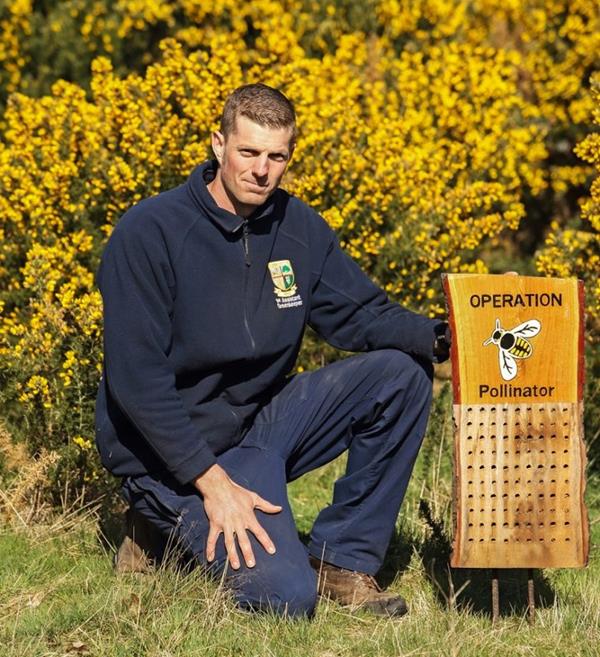You might jump out of your pants when you feel a bee or a beetle on you while concentrating to have a perfect golf swing. However, we should be grateful to these little creatures!
More than 75% of the world’s food crops depend, to some extent, on pollination. Pollinators can be bees, butterflies, birds, moths, beetles, and even bats. Did you know that western honeybees produce 1.6 million tonnes of honey per year!
The United Nation’s Food & Agriculture Organization has a very good recommendation that is very relevant to golf courses as well.
Namely, “Native, local plants are the ones that will be most adapted to native bees. Planting a diverse set of native plants which flower at different times of the year can make a huge difference for pollinators.”
I highlighted bees because particularly native bees are considered the most important group of pollinators.
Golf courses are important for nature conservation since they can provide comparatively stable areas within an ever-changing landscape. Pollination can help maintain biodiversity and the vibrant ecosystems upon which agriculture depends.
Approximately 25% of birds include fruit or seeds, the result of pollination, as a major part of their diet.
I can easily believe that golf clubs could offer their own organic honey in the near future by creating a favorable environment for honeybees. If you agree with me then do not forget to make a bee water fountain as well.
I assume for similar reasons, the Portuguese Ombria Resort (in the Algarve; to be opened in 2020) will have honey harvesting facilities.

The survey by the Organic Trade Association found that in 2016, American consumers spent more than $43 billion on organic food!!! I highlighted the honeybees, but you should not neglect the other pollinator insects!
If nothing motivates you to help the pollinators then think about the PR value of investing in sustainability. It can help you to deliver positive environmental stories that will improve your golf club’s reputation.
By this, you have got very good chances to attract such people who otherwise would not go to golf clubs.
If you agree with me then I can strongly recommend Syngenta’s Operation Pollinator that can help golf clubs to create pollen and nectar-rich habitats in out-of-play areas.
The USGA is recommending to create foraging habitat by:
- Choosing the right flowers: local native plants, plants with a diversity of color, flowers of different shapes, have plants flowering all season, include both perennials and annuals, look at the likely habitat area, growth habit, avoid invasive species, avoid rare species, etc.;
- Where to plant: playing areas (Consider using roughs and out-of-play areas to encourage pollinating insects.), course layout (outside of a bend in the fairway, the inside edge of a dogleg, or the lower side when a fairway has a cross slope), topography (influences the habitat by changing drainage rates, moisture levels, sun aspect, and wind exposure.)
- Look for existing areas of good habitat, as these patches are likely to support pollinators already.
- Whilst any habitat area can be beneficial, the less disturbed it is the better.
- The habitat areas must be accessible for planting and maintenance.
- Visibility of the habitat.
According to The National Recreation and Park Association, baby boomers are the biggest advocates of promoting pollinator health (96%) followed closely by Gen Xers (95%) and millennials (91%).
Another good news for you is that 81% of golfers enjoy natural-looking golf courses.
